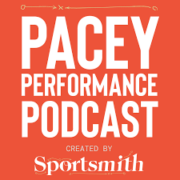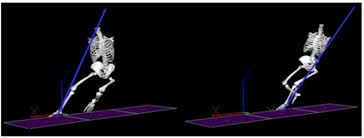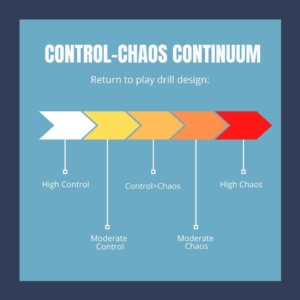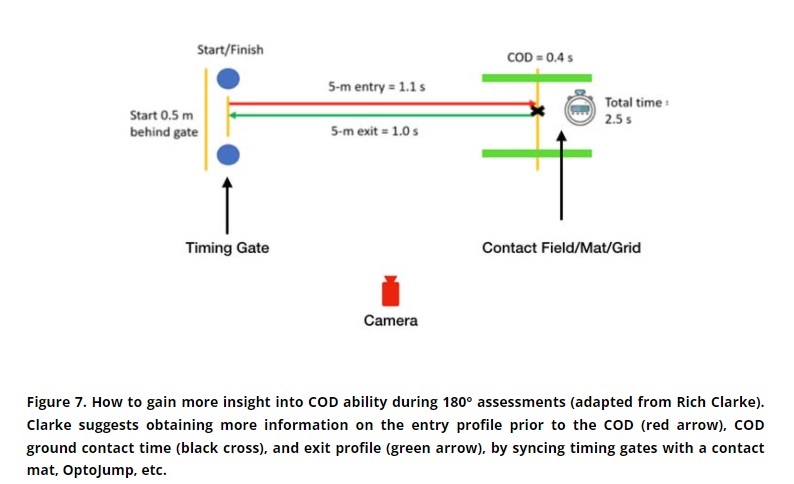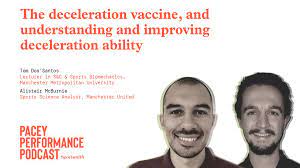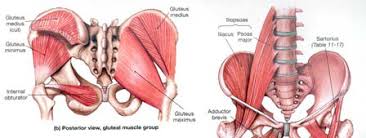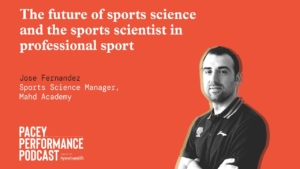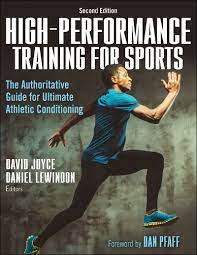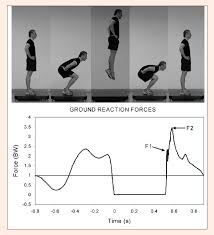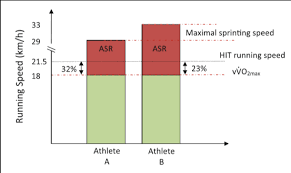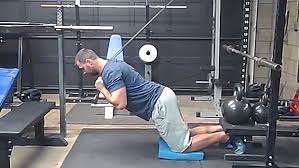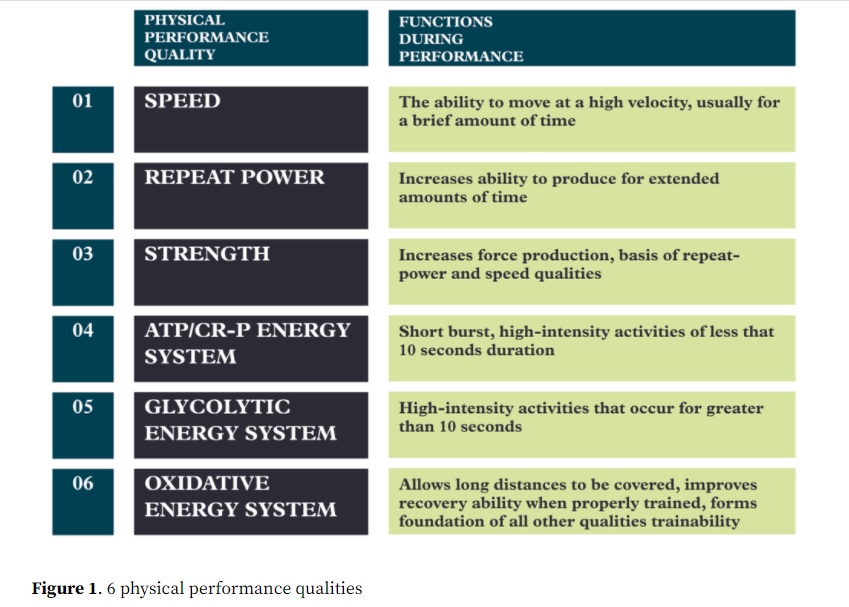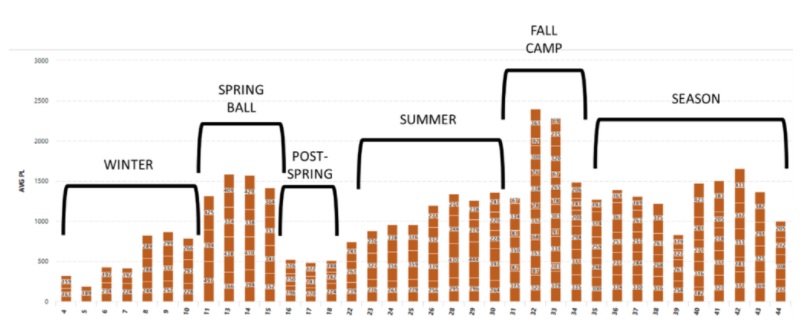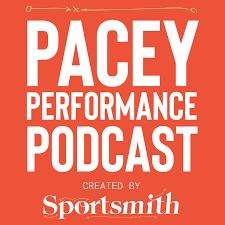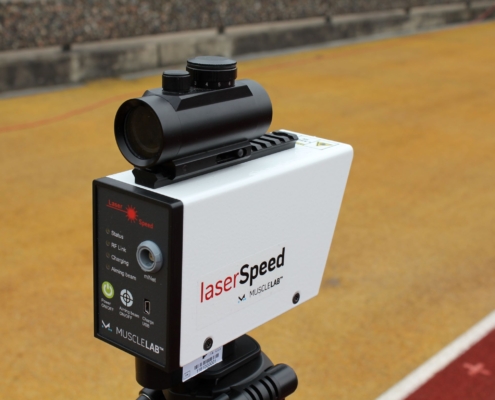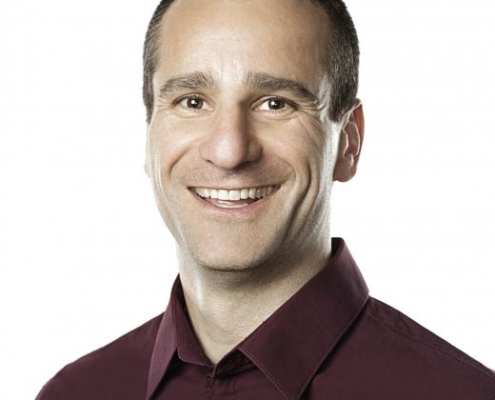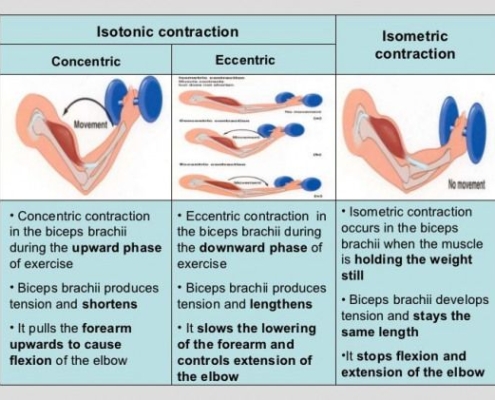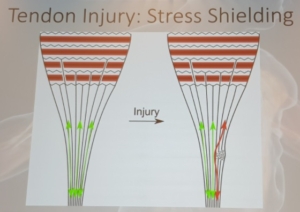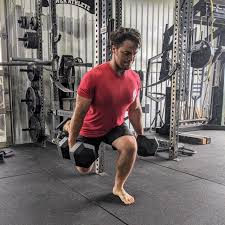Pacey Performance Podcast REVIEW – Episode 381 Alistair & Tom Part 3
This blog is a review of the Pacey Performance Podcast Episode 381 – Alistair McBurnie & Tom Dos’Santos
Alistair and Tom are interviewed in a two part series (Episode 380 and 381). Episode 380 focused more on Deceleration ability. Episode 381 focuses on change of direction ability.
I’ve created a three part blog series out of it. In Part 1 and Part 2 the full script of the podcast was included for Episode 380. In this Part 3 blog an edited version is included with the key take home points from Episode 381.
Alistair McBurnie
Alistair is a sports science analyst for Manchester United’s first team, having worked his way up from coaching at academy level.
Tom Dos’Santo
Tom is a lecturer at Manchester Metropolitan University, where he teaches strength conditioning and sports biomechanics. Previously, he’s worked at the University of Salford, and England Northwest and Manchester Thunder netball squads.
🔊 Listen to the full episode here
Discussion topics:
”Would you be able to talk to us about the key positions we should be worried about when it comes to effective change of direction and how we train those?
”@Tom: there is a whole range of definitions in terms of if we are just talking about a change in path of travel or reorientation of our centre of mass. I’ll break down change of direction (COD) into four phases.
- Initial Acceleration – to initiate the movement
- Preliminary Deceleration – depending on the angle (particularly for more aggressive COD anything 60 degrees and above)
- Preparatory postural adjustments – stride length and preparatory positions to optimise final foot plant (there will be some potential braking over the penultimate step and prior steps
- Execution phase – final foot plant – then re-accelerate
There are probably five or six different change of direction actions during the execution phase.
- sidestep cutting action – involves lateral foot plant abducting at the hip and pushing off towards the opposite direction
- cross-over cut – medial foot placement on the same limb and push off in the same direction
- shuffle step – a series of lateral foot plants – we see that from an evasive perspective (rug
- split step (jump cut) – jump into the cut and push off that one limb, or land bilaterally and then push off one limb
- spin maneuver– typically a 270 degrees blind side turn- popular in ball carrying sports to avoid being tackled
- Pivot – turn to 110-120 degrees or more performed bilaterally or unilaterally
- Deceleration – which is an agility action in its own right
Performance-Injury Trade Off
Some of the technical characteristics that are required for faster performance could be at odds with potential increased knee joint loading.
There is always going to be some injury risk with changing direction.
The faster we run the greater the knee joint load so typically we need to reduce our momentum into that, so the penultimate foot contact is key. I believe that a lot of the poor postures adopted in that final foot contact are a by product of sub-optimal positioning on those preparatory steps, particularly in the penultimate foot contact. I think it’s a really important step to put you in the optimal position to execute an optimal final foot contact.
Penultimate Foot Contact
We encourage EARLIER BRAKING particularly with these sharper COD as it’s a safer strategy with the penultimate foot contact because we decelerate in the sagittal plane, the knee joint is in a stronger position, GRF vectors are aligned with the knee joint centre, and we go through substantially greater range of motion (typically you go through double the amount of knee flexion, around 10-120 with the penultimate foot contact- PFC 100–120° versus FFC 20–60°) which equals greater angular displacement. Thus, based on the work-energy principle, ↑ work = greater reduction in kinetic energy and ↓ velocity.
Figure 1. The image on the left illustrates final foot contact (FFC), and the image on the right illustrates penultimate foot contact (PFC).
Final Foot Contact
If we think about the Final Foot Contact (FFC) you are asking the limb to go from a rapid braking phase to a rapid transition into a propulsive phase, so asking it to do two things during ground contact, whereas the PFC can focus purely on braking, and it goes through increased range of motion which is a safer strategy.
For a sharper turn (180 degree) we encourage to decelerate more in the anti-penultimate step, start rotating in the PFC to start lining you up in the correct position.
Brake early and lower your centre of mass
That’s going to put you in the optimal position to create that perpendicular force with a wide lateral foot plant in order to change inertia and accelerate laterally or medially in this sense. By having a wide lateral foot plant we need to acknowledge we are going to increase the moment arm in the frontal plane, so that’s going to increase knee valgus loading, so there is probably this Goldilocks affect- not too wide but not too narrow.
Frontal Trunk control
Another performance-injury trade off. If your objective is to have the greatest exit Velocity we should be encouraging medial trunk lean. However, this is the argument that we need to ”drop the shoulder” which is a deceitful maneuver to unbalance and fool your opponent however we do get increased moment arm in the frontal plane and that is going to increase the knee valgus
If the objective is to complete the task as fast as possible we try and rotate early towards the direction of travel.
Hip Extension and Knee Flexion Paradox
If we want to decrease the risk of injury we just need to ask the athlete to run slow and land really softly.
Slower athletes display lower knee joint loads and go through greater knee and hip flexion, they distribute the load further up the chain. Faster athletes, make ground contact/land in initial hip flexion, they don’t go through any further hip flexion so maintain the isometric and go purely into hip extension- so possibly resisted hip and knee flexion could be a strong performance indicator, while also acknowledging the greater knee joint load of this strategy.
Foot Position
We encourage a neutral foot position. If you are excessive internally rotated this will increase the susceptibility to knee abduction moments and having excessively rotated outwards can lead to pronation and lead to tibial rotation.
A big debate is if we heel strike or not? I wouldn’t want to change direction just on the ball of my foot. I assume I am going to increase the loading and susceptibility to ankle injuries and we need that firm base of support.
Optimal Technical Model
I don’t think it exists but we do need to acknowledge the Performance-Injury trade offs and address the technical deficits that aren’t going to offer any performance advantages.”
”@Alistair: I think that enhancing an athlete’s physical capacity is probably the most effective way to mitigate injury risks and develop their strength/power qualities to enhance performance.
Control to Chaos Continuum
I also like the Control to Chaos Continuum. During a session I always start with pre-planned drills to begin with. This allows you to make sure that you execute a certain volume of left and right change of directions, so you know how much work you did in the session, and it’s way of making sure you are getting the required dosage that you can build on.
Within more of an agility based drill you do forsake that element of control because it does become more chaotic. But these are really important for game performance and this would be a good segway into the technical session.”
”Is COD testing losing its place in an applied setting?”
”@Tom: I suppose it is, but I don’t think it should be. I still think there is a time and place for it.
COD Testing
Pre-planned COD testing and training seems to be getting bashed at the moment as it’s not sport specific and it doesn’t involve perception-action coupling. However, we test and train sprinting in a pre-planned environment. Everyone is okay addressing sprint mechanics in a pre-planned environment, everyone is okay addressing jump mechanics in a pre-planned environment. But as soon as we want to do a COD drill we immediately must throw a ball and a defender in, when in fact most athletes don’t warrant the right for that because they can’t MASTER THE MECHANICS in the pre-planned.
We don’t programme our plyometrics by going to a 50 cm box and thinking about an overhead target. We do it in a controlled manner. We still want those pre-planned elements in our training, we are not saying completely remove the unplanned elements, just think about the volumes and dosages.
I’d argue that in most sports our coaching philosophy is we want robust 360 degree athletes who are proficient at changing direction off left and right limbs from low, medium and high velocities
If we start breaking it down into our tests and we say we want our athlete to sidestep cut off 45 degrees, 90 degrees, do some aggressive pivots. But then we also need to make sure they are equally proficient off both limbs. So from a timing gate perspective, that means they need to do at least two trials on the left, two trials on the right, at 45, 90 and 180 degrees. But that’s 5 metres, which shows that they are good at decelerating and changing direction from a low entry velocity. So do I do repeat the same thing at a high entry velocity? Before you know it, we probably need 30 trials to build up this multi-directional speed profile and that’s just for one sidestep cutting action.
The other issue with timing gates is we are getting no insight into movement strategy, we are just getting an indication of how quickly they are getting from A to B (which is fine when the objective is in most sports is to get from A to B). Particularly we want to know how are they entering, how are they changing direction and how are they exiting? With the advancement of wearable non invasive technologies we are starting to get more insights into this. We can mask our deficiencies in COD with superior acceleration and linear speed capabilities.
Change of Direction Angle Profile
We do Force (Load)-Velocity load profiling with our jump squats which takes 45 minutes so why can’t we do the same thing on the pitch and view this testing session as an isolated training session to elicit a training stimulus.
We can build a picture of 45 degree, a 90 degree and 180 cut for each isolated COD cutting task such as a sidestep cut.
Agility Assessments
I don’t think there will ever be a perfect agility assessment because sport is chaotic. I am not a fan of one versus one testing, looking at how successful one is at evading an opponent. I think it’s quite floored because we are still not getting an insight into perceptual-cognitive speed. How do we standardise that defender for the attacker, how do we standardise the starting position? We can’t use a generic stimulus such as flashing light or arrow because they don’t differentiate skill level. You need a sport specific stimulus and I don’t think you can complete that on the pitch.
To evaluate we should be looking at the movement quality and not just completion time or COD deficit, which are floored in my opinion. We should be filming our athletes completing COD tasks to see how they are executing them – are seeing if they are adopting double foot contact or predominantly loading on one limb, and look at their trunk position etc (whether it’s during a testing session or during field based conditioning sessions).
The reason why I’m still a big advocate of these pre-planned tests is because we are focusing on that perception-action coupling (with agility drills). What we are interested in is the mechanical ability to perform that task irrespective if we add some externally directed attention or agility stimulus.
If an athlete is poor at performing that task, it is only going to be amplified and worsened in an unplanned environment
I still think that a lot of athletes don’t really excel at these pre-planned tasks where we are evaluating the physical and mechanical ability to perform the COD task.
COD Deficit
The COD deficit is really popular as a way of getting an isolated measure of COD ability by subtracting a linear sprint time of equivalent distance from the COD test time such as the 5-0-5.
505 completion time – 10-meter sprint time
But it seems to be maybe potentially biased to slower athletes. If you are ‘slower’ (but achieve the same 5-0-5 time) you’ll arguably going to have a ‘better’ COD deficit but the athlete is slower!
If you think of a test like a 5-0-5 a faster athlete is actually at a disadvantage because they have greater horizontal momentum and they are going to have to apply a greater braking force in order to decelerate and perform that task. So something we have to factor in with the COD deficit is the athlete’s entry speed.
A better option might be to break the COD completion time down into three phases we can assess:
- Entry time– point they enter COD to FFC
- COD time – initial contact to toe off of main foot contact (FFC)
- Exit time
If you’d like to read more about this, see Tom’s article on Simplifaster for more information.
Also pay attention to the pacing strategy (which might be indicated by entry time). When you do a 5-0-5 you might see some athletes start decelerating prior to the entry gate (so they want to decelerate over 6 metres- 1 metre before the gate) which is a self regulatory effect where faster athletes potentially don’t want to utilize their full speed because of this braking load tolerance, and want to make the task easier. It seems to be the same for weaker athletes as well. It seems to be a physical capacity issue; eccentrically strong athletes can approach faster and decelerate quicker.”
Top 5 Take Away Points:
- Performance-Injury Trade off – Some of the technical characteristics that are required for faster performance could be at odds with potential increased knee joint loading.
- Optimal technical model – I don’t think it exists!
- Pre-planned COD tasks – we want those pre-planned elements in our training, we are not saying completely remove the unplanned elements, just think about the volumes and dosages.
- Assessing movement – we should be looking at the movement quality and not just completion time.
- COD deficit – could potentially be biased to slower athletes.
Want more info on the stuff we have spoken about?
Science of Multi-Directional Speed
You may also like from PPP:
Episode 380 Alastair McBurnie & Tom Dos’Santos
Episode 372 Jeremy Sheppard & Dana Agar Newman
Episode 217, 51 Derek Evely
Episode 207, 3 Mike Young
Episode 192 Sprint Masterclass
Episode 87 Dan Pfaff
Episode 55 Jonas Dodoo
Episode 15 Carl Valle
Hope you have found this article useful.
Remember:
- If you’re not subscribed yet, click here to get free email updates, so we can stay in touch.
- Share this post using the buttons on the top and bottom of the post. As one of this blog’s first readers, I’m not just hoping you’ll tell your friends about it. I’m counting on it.
- Leave a comment, telling me where you’re struggling and how I can help
Since you’re here…
…we have a small favor to ask. APA aim to bring you compelling content from the world of sports science and coaching. We are devoted to making athletes fitter, faster and stronger so they can excel in sport. Please take a moment to share the articles on social media, engage the authors with questions and comments below, and link to articles when appropriate if you have a blog or participate on forums of related topics. — APA TEAM

